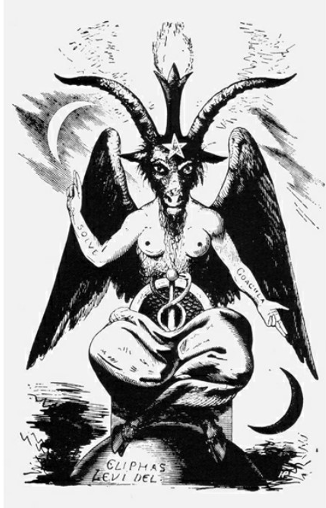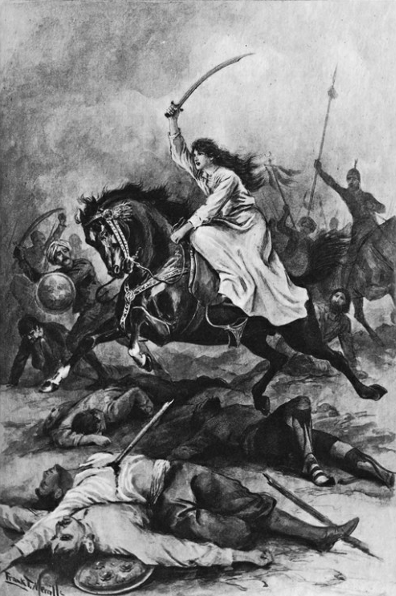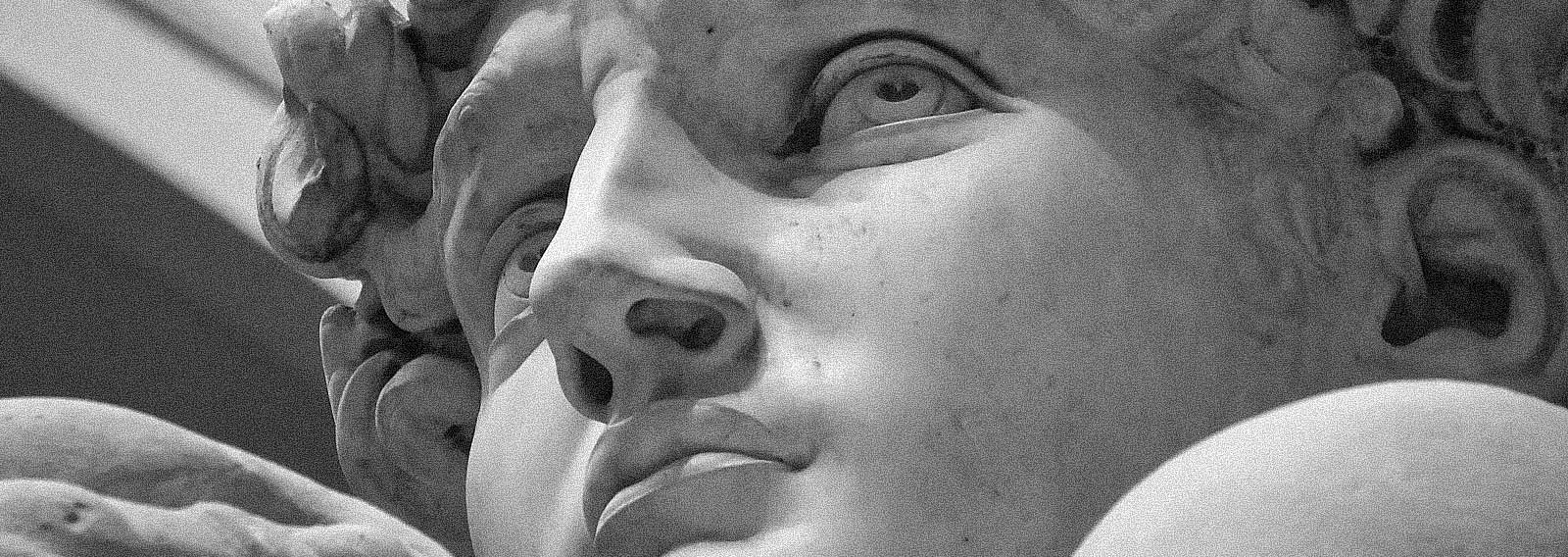“A woman shall not wear a man’s garment, nor shall a man put on a woman’s cloak, for whoever does these things is an abomination to the Lord your God.” Deuteronomy 22:5
There is an interesting insanity that is happening in the feminist movement at the moment. A battle for supremacy. Who are the combatants? Women stand in one corner, and who stands in the other corner? Men dressed as women. A remarkable situation, and one that is confusing to many people.
Gender politics has for some time now focused on those who were perceived to be the most marginalized, and that is no longer women or even women of colour, it is men who want to identify as women. This has caused a chasm in the feminist identity politics movement because now men are claiming women’s rights, but doing it as “women”. Should women recognize these men’s claims to the rights of being protected women? Or should they balk at the idea of having to share women’s spaces and women’s issues with people born with penises? Where should feminism draw the line here?
This issue has been made famous by the recent approval of Kentanji Brown Jackson to the supreme court of the United States, who gave a remarkable answer to what should be a simple question. She claimed that she could not define what a woman was because she was “not a biologist.”[1] This is clearly absurd, even my four-year-old daughter could answer this in a moment. But this is the quandary that intersectional feminism and large portions of the left now find themselves in.
This same circus was repeated in an Australian Senate Estimates hearing. One Australian Senator asked, “Can someone please provide me with a definition of what a woman is?”[2] To which was responded:
“‘I think there are a variety of definitions and I think perhaps to give a more fulsome answer we should take that on notice,’ the Secretary said. The Liberal Senator interrupted to explain he was after a ‘simple’ definition, to which Dr Murphy said, ‘there are a variety’. ‘It’s a very contested space at the moment,’ Dr Murphy said.”[3]
A very contested space? Again, this is absurd. But people are confused why progressives who have pushed women’s issues for so long are now buckling under transgender activism, and are giving up on being able to define the women they always said they were advocating for. Was feminism not about lifting women up from the beginning? How did it become about denying or erasing their existence? Well, you might be surprised to hear the answer to this question.
You will often hear certain evangelicals claim that feminism was a biblically inspired movement. I debunk that claim here in some detail. The early “evangelical” feminists had no time for the Bible’s teachings on gender. But what I want to show in this piece is something many people are just not aware of at all — that transgenderism was an integral part of the feminist movement from the beginning. I will conclusively prove this historically in a moment, but first observe what the word transgenderism itself means: “a state or condition in which a person’s identity does not conform unambiguously to conventional ideas of male or female gender.”[4] In other words, it means to transgress all gender boundaries.
Trans activists generally acknowledge that sex differences exist in biological realities, but they assert that gender is a state of identity, or how you feel about your gender representation. You may be biologically male, but psychologically female or vice versa. In essence, the trans activist wants to smash gender boundaries, which is precisely what the feminist claims as well. Feminists generally refer to this as the “glass ceiling” and it is the concept that wherever men have gone women can, should and will go there as well – if about 150 years after the men…
So, if feminists also want to transgress gender boundaries, is there a more explicit connection between the origins of the feminist movement and transgender ideas? Yes, there most certainly is, and Per Faxneld has documented this in his important work, Satanic Feminism: Lucifer as Liberator of Woman in Nineteenth-Century Literature.[5]
I have documented in earlier pieces (such as here) the inherent connections between Luciferian ideas and early feminism, so we do not need to re-prosecute that whole argument here. It is enough to note that proto-feminists and early feminists reinterpreted the actions of the Devil in Genesis 3. Rather than viewing the Serpent as deceiving the woman who then gave the fruit to her husband, they reinterpreted this event as liberating the woman from her “bondage” to man and God, i.e. the “patriarchy”. This is where the concept of overturning the patriarchy comes from. But what is important for our current piece is that this means the early feminists presented Lucifer, or the Devil, as their liberator rather than as their enemy. Now it is a truism of Christian theology that people will be conformed to the image of the gods they worship and adhere to. So, what is the image of the Devil?
Conceptually, people think of the Devil as masculine. He is the ultimate “bad guy”, double emphasis on the “bad” and the “guy”. Traditionally theologians have largely conceptualized the Devil as a man, or manlike figure, and denoted him with the masculine pronoun, ‘he’.[6] However, as Faxneld notes, not all have agreed with this summation. As the Devil is an angel, this means he does not conform to the gender norms that men and women are formed. Christian theological tradition does not require that the Devil conforms to a particular sex, indeed it was recognized that demons could take the forms of any gender as they chose.[7]
Anyone who has read the ancient Greek tales will be familiar with the way that the Greek deities could change gender at will, often using this to trick their victims and even at times the heroes of the tale. Minerva, in Homer’s Odyssey, is one example, but Odin was known to do the same thing and many others. In fact, it was a consistent theme throughout the pagan pantheons to have gods transgressing all boundaries, including gender boundaries.
From a Christian perspective, these beings were neither fake nor gods. They were a combination of legends and people’s encounters with demonic beings. It is easy to understand why the early Church, and many in the Medieval Church, viewed Satan neither as male nor female, but as a boundary transgressing being, who took on the form that was useful at the moment.
In many medieval and early modern representations of the Devil he is shown to be a “hermaphrodite monster”. Demons were viewed as ontologically unstable creatures that crossed gender and species boundaries. “Gender-bending would then be another sign of the liminal and blasphemously category-defying nature of Lucifer and his demons (figures 2.2 and 2.3).”[8] Faxneld shares with us some abominable examples of how the early modern artists visualized the Devil in figures 1 and 2.

As you can see, it was common for the Devil, and demons, to be visualized as inherently unstable beings that conformed not only to no gender boundaries but no natural boundaries either. The devil is the ultimate boundary-breaking entity, which is really a good description of evil itself. Evil intent consists of the desire and intention to transgress the boundaries laid out by God himself. Indeed, one of the words for sin in the Bible is transgression, which literally means to transgress the boundaries of what the Lord says is good. Evil inherently transgresses all of God’s good boundaries.
But not only was the Devil represented by such boundary transgressing beings, but he was also conceptualized or represented as a woman, or a serpent-woman. For instance, in one Christian work “Livre pour l’enseignement de ses filles (‘Book for the Education of his Daughters’, 1371–1372), the author:
“…Geoffrey attempts to instil in his daughters the lesson that women should defer to fathers and husbands in anything but domestic matters and makes his point by retelling how Eve broke this rule when she conversed with the serpent, ‘whiche as the Hystorye sayth hadde a face ryght fayre lyke the face of a woman’.”[10]
It may be strange for us to conceptualize a feminine Satan because it is more common to view him as masculine, but this was a consistent image throughout Church history.
“…A more straightforwardly female Satan can be seen in the actually very common depictions of the snake in the Garden of Eden with a woman’s head on its serpentine body and sometimes also the breasts of a woman…Exactly when the notion of a female snake was established is difficult to say, but the earliest translation of the Bible into Latin rendered the word as serpens—feminine gender.”[11]
Indeed, according to J. B. Trapp, “it was the most frequent way of representing the Edenic serpent from the late twelfth century until the late sixteenth century, when the human features of the creature disappear and it becomes, once more, only reptilian.”[12] This is interesting that the devil would be represented by feminine imagery, but again, note, that the Devil is not a man nor a woman, Satan is a fallen spiritual being. The Devil is inherently in a different category. Even if you want to argue the Scriptures lean towards presenting him as a male figure, note, that the view that he transgressed all boundaries is inherent in his rebellion against God’s good boundaries and in his role as ‘The Evil One’.
The most famous image representing the Devil’s transgender nature is the Baphomet (figure 3).

Baphomet is a hermaphrodite figure, and one of the most recognized symbols of Satan in the last century or so. Baphomet was first visually conceptualized by French occultist Éliphas Lévi “in his book Dogme et rituel de la Haute Magie (‘Dogma and Ritual of the High Magic’, 1855) and elsewhere.”[14]
Note, we are not seeking here to establish precisely how Scripture describes the gender of the Devil. The point is to establish that a lot of historical Christian theology viewed the Devil as a being that transgresses all boundaries, and early feminists were inspired by this and took this idea and ran with it. They turned this transgender being into a liberator of women:
“Nineteenth-century feminists often felt they somehow had to deal with male chauvinists’ use of the story in Genesis 3. One way of doing so, which seems to have been quite widespread, was to turn the tale on its head, making Eve a heroine and the serpent benevolent.”[15]
The founding emphasis of feminism was rebellion against the long-established gender boundaries taught by the Scriptures and applied to Western society. No one really denies this, either, but most people are not aware of the full implications of these Biblical ideas. They do not understand how rejecting them unleashes Satanic forces on society.
From very early on proto-feminists and early feminists sought to break the gender boundaries of how women should be viewed in fiction or in public. An example of this is the son-in-law of the first feminist philosopher Mary Wollstonecraft, Percy Bysshe Shelley (1792-1822). In his Revolt of Islam, which was dedicated to his wife Mary Shelley,[16] the daughter of Mary Wollstonecraft and William Godwin, Shelley incorporates both Wollstonecraft’s feminist and Godwin’s Satanic ideas, to present to the world a gender boundary-breaking hero, Cyntha.[17]
The poem is filled with obvious Satanic imagery. The first part of the poem relates the tale of a woman giving aid to a fallen serpent referred to as the Morning Star, which was cast to the ground after being defeated by an eagle that represents what the people see as the ‘good God’. In Shelley’s story, the ‘good God’ is the true arch-enemy:
“This Fiend is the creator of death, earthquake, blight, and so on. His enemy the serpent is the benefactor of mankind and the enemy of all oppressors. When he once again resumes his combat with “God”, thrones will shake and ‘earth’s immense and trampled multitude’ will begin to realize its own power.”[18]
The serpent is the liberator in Shelley’s account. The woman allies herself closely with this serpent, this “friend of the oppressed”. The next part of the poem recounts the tale of Cyntha and her brother. Cyntha’s story in some ways parallels the serpent’s.
“…[she] is the earthly messenger of Satan the liberator. This messenger propagates feminist ideas and defies gender roles. Cythna leads the final insurrection against the tyrant Sultan who is the villain of the tale, which is a quite remarkable role for a woman to be allowed to play.”[19]
Shelley presents Cyntha in the dominant role as a leader in the rebellion against the patriarchal society. She, along with her brother, are both defeated and burned at the stake.[20] Yet her hope is that she will inspire other women to take up the call and take on the patriarchy themselves. Faxneld notes that Islam in this passage is symbolic of Christian society, which was a common technique in this era. John Locke does something similar in his Letter Concerning Toleration.
Shelley’s intentions are clear. In The Revolt of Isalm Shelley was attempting to create a feminist counter-narrative myth to demonstrate ideological opposition to the dominant Christian view of gender roles.”[21] Shelley’s goal, as an advocate of feminism, like his parents-in-law, is to frame God and the patriarchy ordained by God, as the force of oppression, and encourage women to ‘realize’ that they can smash all gender boundaries.
“Shelley’s revolutionary Satanism is combined with what can, without much hesitation, be described as a feminist ideal. This is further reflected, for example, in how Cythna takes on a role coded as masculine, when she comes charging on a black steed, sword in hand, to rescue her brother. Shelley held a utopian vision that gender differences, ‘detestable distinctions’, as he called them in a letter, would ‘surely be abolished in a future state of being’.”[22]
‘Detestable distinctions’? Shelley’s open and explicit goal is of a future feminist society where gender distinctions are seen as evil and are abolished completely. Sound familiar? It’s not an accident that this was inspired by Luciferian ideas, because as we saw both Christian theologians and early feminists saw Satan as a gender-bending being.
Christians often try to argue that the move for equality in society was the result of biblical influence. However, one thing is certain, the Scriptures do not teach equality (cf. read more here). Critics of the Bible see this clearly, including Faxneld, and feminists:
“The topic of women’s status within the early church has been debated for a long time. Looking at scripture itself, it is easy to find several passages that give strong support to the subordination of women, such as the aforementioned 1 Timothy (2:11–15) but also Titus 2:3–5, Ephesians 5:22–33, Colossians 3:18, and 1 Corinthians 14:34–36. Phrasings like ‘Wives, submit yourselves unto your own husbands, as unto the Lord’ (Eph. 5:22), and the ways in which they have been used to serve patriarchal ends, make it easy to see why some feminists would later view God as the protector of patriarchy (and, occasionally, Satan as an ally in the fight against it).”[23]
The Bible is clearly patriarchal, that is, supporting leadership by men and it rejects the pretensions of equality. Because of this, feminist approaches to Scripture have flicked between rejecting it outright, rejecting it as modified, and in modern “evangelical” circles, explaining it away as culturally outdated, irrelevant or superseded. Shelley, and other Satanic Feminists, sought to subvert it, and reclaim passages like Genesis 3 to align the Devil with woman as her liberator.
The poem Revolt of Islam was not successful at first, but it eventually had a wide impact, when sold in collections of Shelley’s works:
“Brown labels The Revolt of Islam ‘the most powerful feminist poem in the language’ and the second ‘most thoroughly grounded in the realities of the woman question’, being ‘focused … squarely on the efforts of the subject sex to cast off the chains of male supremacy’. The Victorian poet and feminist Mathilde Blind (1841–1896) agreed, excitedly describing Cythna as ‘a new female type’ with no previous parallels in literature.”[24]
When feminists tell you where their real inspiration came from, take note. A fighting woman was not completely unknown to Westerners, of course, but Shelley’s use of this imagery was novel. To deliberately stir up woman to turn against the patriarchy.

Cyntha is not radical in our modern world, but she was in Shelley’s, and really, she was not that long ago as well. The idea of a female soldier charging the enemy lines, back then, was laughable. It still should be today. But the goal of feminism from the beginning was to subvert gender norms and boundaries, and so this is what feminists did. This is the core of feminism, that all gender boundaries are shackles to be cast off. Feminism IS transgenderism.
Another early feminist icon that also exhibited this gender-bending characteristic and had significant influence on the feminist movement was Sarah Bernhardt. She was a French actress in the late 19th and early 20th centuries, and while you have likely not heard of her, at the time she was incredibly well known and influential. She was unparalleled in her ability and genius for publicity in her era (1844-1923).[26] Bernhardt is therefore the most well-known of all the individuals discussed in Faxneld’s studies on Satanic Feminism.[27] Among the many in this era that made an art form of flirting with the demonic, she was the most significant and influential.[28]
Bernhardt was financially independent in her own right, and therefore did not need to submit to traditional gender roles, or what Faxneld calls “oppressive patriarchal structures.”[29] Bernhardt would flick between whatever representation of gender was deemed useful to her in the moment. “…it is crucial to stress that she always projected multiple personae, appearing not only as a self-governing transgressive bohemian but at times also as a soft womanly woman who retained various traditionally feminine virtues.”[30] However, her overarching personage was that of a woman who made her own gender rules. She was a gender transgressor.
She never actually expressed vocal support of the women’s rights movement, but rather set herself up as a model of their agenda.
“…much of her behaviour was clearly disruptive of gender roles: wearing men’s clothes on and off the stage (though it was far from unheard of for actresses to play male parts, Bernhardt did so more often than most) and participating in activities considered somewhat controversial for women, all associated with la nouvelle femme, such as tennis, bicycling, and hot air ballooning.”[31]
She lived an incredibly rebellious lifestyle that was deliberately immoral and transgressive, openly being a single mum, open adultery, and flaunting her nudity in her youth. In other words, “her credentials as a subversive rule-breaker were…impeccable.”[32]
While some of her activities would be seen as rather benign today, they were utterly scandalous in her time. In fact, the difference between how she would be viewed today and how she was viewed back then, is the point of this article, and this series on Satanic Feminism. Femininity today looks more like Sarah Bernhardt than Mary the mother of Jesus. One of these women is the height of impurity, the other the model of modesty and purity. If your response is: Matt, none of what she did is that big of a deal. I respond — yes, as I have said we live in a culture more influenced by Satanism than Christianity. Christendom was stolen and we now live in Satandom.
While Bernhardt was focused on expressing her individual gender expressions as she saw fit, and not engaging in explicit political activism, “…we need to bear in mind that the extremely public performance of this project naturally also had political implications and effects.”[33] And what sort of political message was she sending with her persona? According to Mary Louise Roberts, she was instrumental in “causing a shift in gender roles by setting a transgressive example…” The whole characteristic of her public persona was that of a transgender activist. This was not just implicit either.
“Bernhardt and her peers played with gender norms by shifting back and forth between conventional and unconventional roles and behaviour. This, it has been claimed, made other women seek inspiration in her persona for their own struggle for freedom. It is notable, for instance, that feminists frequently idolized Bernhardt, with feminist newspaper La Fronde glowingly describing her in 1897 as a ‘queen’ and ‘priestess outside the temple’. Parisian lesbians also used her as a role model when forging subversive sexual identities. In particular, they mimicked her cross-dressing roles.”[34]
Presenting transgressive women representing themselves as men in the public sphere was a common tactic of the early feminist movement. Because their goal was always to break all gender boundaries. This is what feminism means, in its truest, historical definition: gender boundaries are arbitrary and all of them must go. And is anything really different today? Are there any gender boundaries that modern feminist movements hold sacred?
So, we can see conclusively that the stoush between feminists and transgender activists today is not a corruption of the feminist movement, or really something alien to the feminist movement. It is simply the unavoidable logical extension of the original goals of feminism, and it’s really not even new, it was there at the beginning. As we saw “…Shelley held a utopian vision that gender differences, ‘detestable distinctions’, as he called them in a letter, would ‘surely be abolished in a future state of being’.”
“The choice of diabolical imagery for these identity games—which at times engulfed the everyday life led by the individuals in question—reveals what the taboos and limits the women consciously transgressed and mocked were tied up with: conservative Christian values. Embracing demons, Satanic serpent motifs, and the horrific could hence function as a way of criticizing such values and rejecting them on a symbolic level. In other words, demonism was one of the registers of symbolic resistance available for rebellious women to draw on.”[35]
A philosopher might say that underneath the claims of feminists lies the ideological foundations for the destruction of all gender boundaries and ideas. They would be correct. But as I am a Pastor and I mainly write from the perspective of God’s word, I would argue something else: there is a spirit underneath the claims of feminists that rears its head again and again. The same Spirit that led Eve to overcome her husband, Jezebel to dominate Ahab, and that wreaks gender havoc on society whenever it is unleashed by our foolish pretensions for equality and our rejection of God’s good and preserving boundaries. But perhaps I will, uncharacteristically, leave the last words to journalists who observed Sarah Bernhardt in her day:
“In 1890, one of the writers for the newspaper L’Éclair stated that ‘she descends in a curvy line from the serpent who corrupted Eve’. The critic Jules Lemaître saw her as ‘a distant chimerical creature, sacred and serpentine with a fascination both mystic and sensual’…A 1908 article—fittingly enough for a Satanic female figure of titanic stature—made her out to be a female counterpart to Nietzsche’s Übermensch.”[36]
‘She descends in a curvy line from the serpent who corrupted Eve.’ Wow. That is incredible. But what is even more incredible is that today this woman doesn’t even stand out that much to both believers and unbelievers. Women today, in general, are more like Sarah than Mary, we need far more Marys and far less Sarahs.
This article is part four of the Satanic Feminism series.
[3] Ibid.
[5] https://www.goodreads.com/book/show/26823012-satanic-feminism
[6] Faxneld, Per. Satanic Feminism (Oxford Studies in Western Esotericism) (pp. 45). Oxford University Press. Kindle Edition.
[7] Ibid, p45, note 87.
[8] Ibid, pp. 46-47.
[9] Ibid, pp 47-48.
[10] Ibid, pp. 48-49.
[11] Ibid, p. 47.
[12] Ibid, p.47.
[13] Ibid, p.55.
[14] Ibid, p. 52.
[15] Ibid, p. 72.
[16] Yes, that Mary Shelley, the one who wrote Frankenstein.
[17] Ibid, p. 80.
[18] Ibid, p. 81.
[19] Ibid, p. 83.
[20] Ibid, pp. 82.
[21] Ibid, p. 83.
[22] Ibid, p. 84.
[23] Ibid, p. 37.
[24] Ibid, p. 84.
[25] Ibid, pp. 85.
[26] Ibid, p. 387.
[27] Ibid, pp. 387.
[28] Ibid, p. 388.
[29] Ibid, p. 388.
[30] Ibid, p. 388.
[31] Ibid, p. 388.
[32] Ibid, p .388.
[33] Ibid, p. 389.
[34] Ibid, p. 389.
[35] Ibid, p. 386.
[36] Ibid, pp. 395-396.























You must be logged in to post a comment.